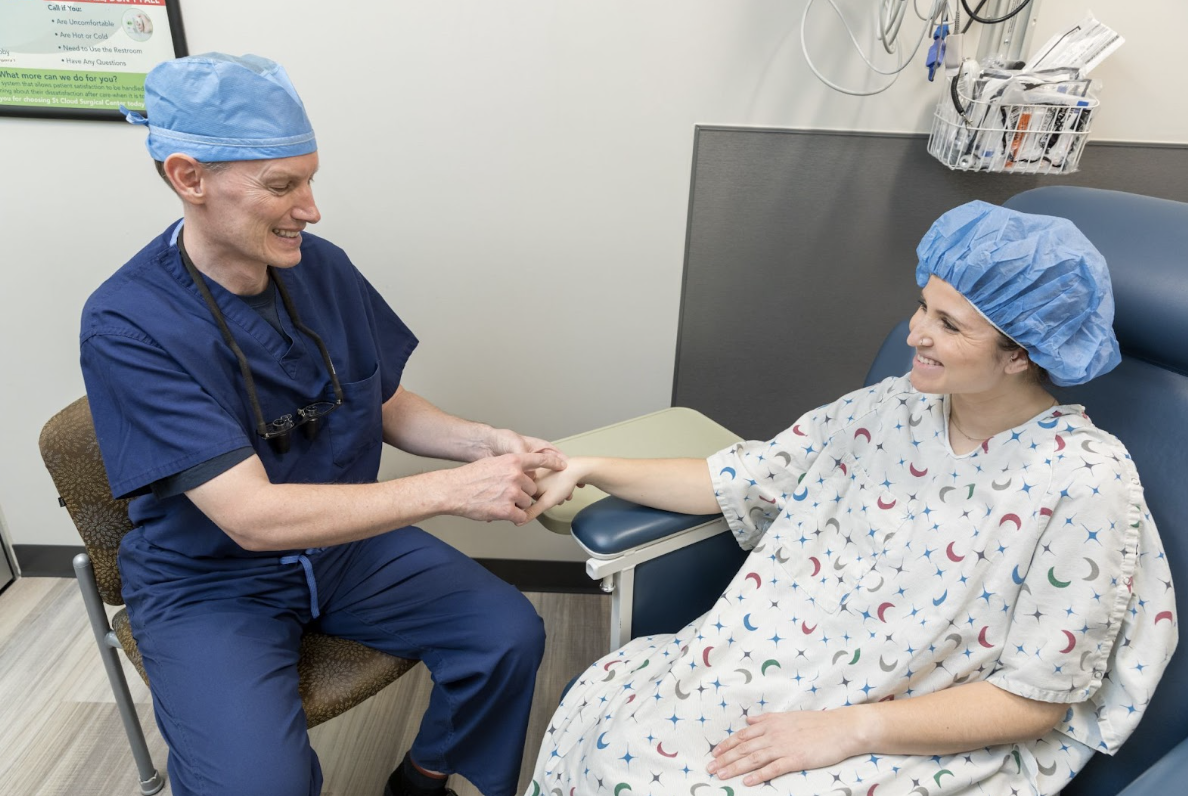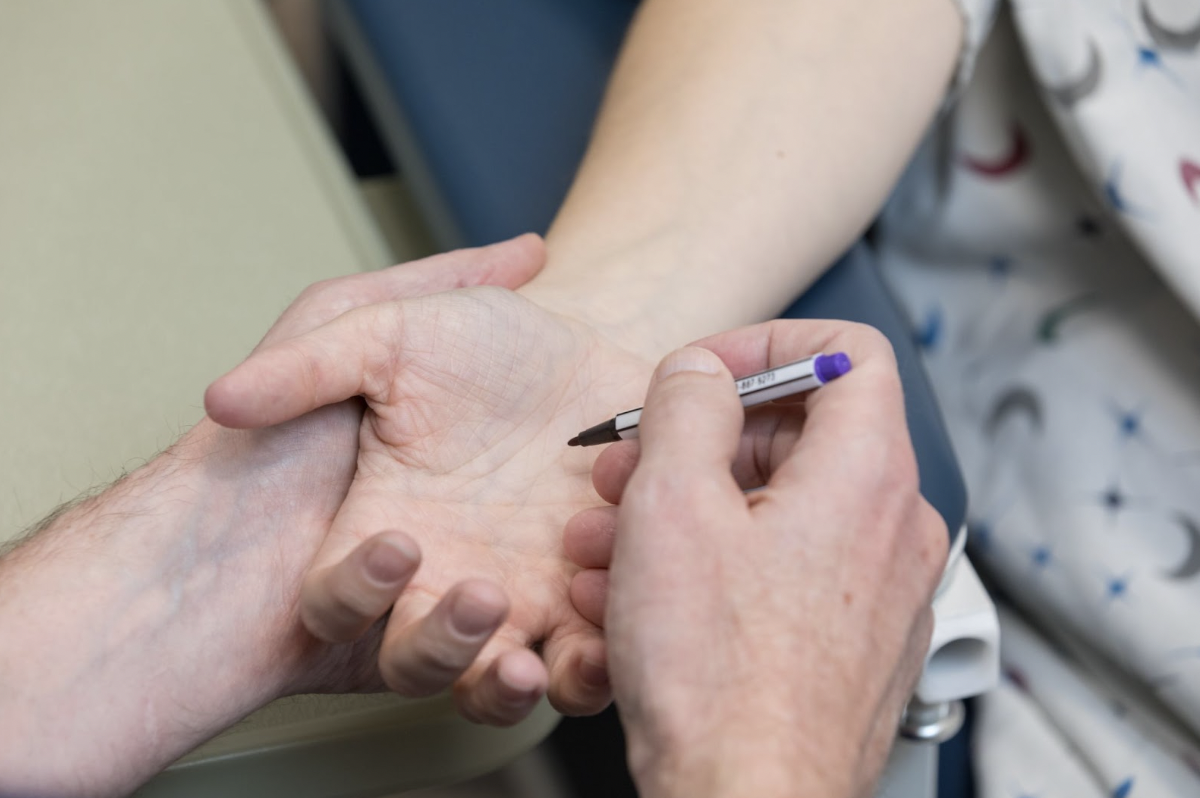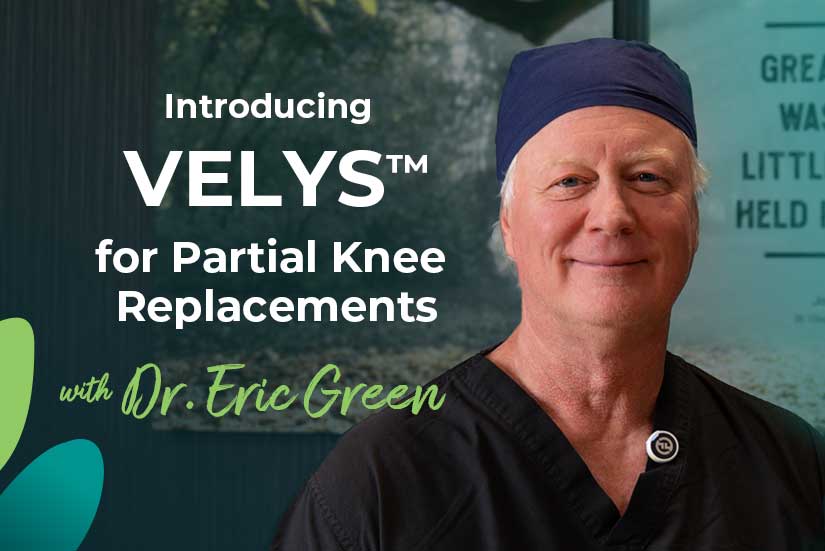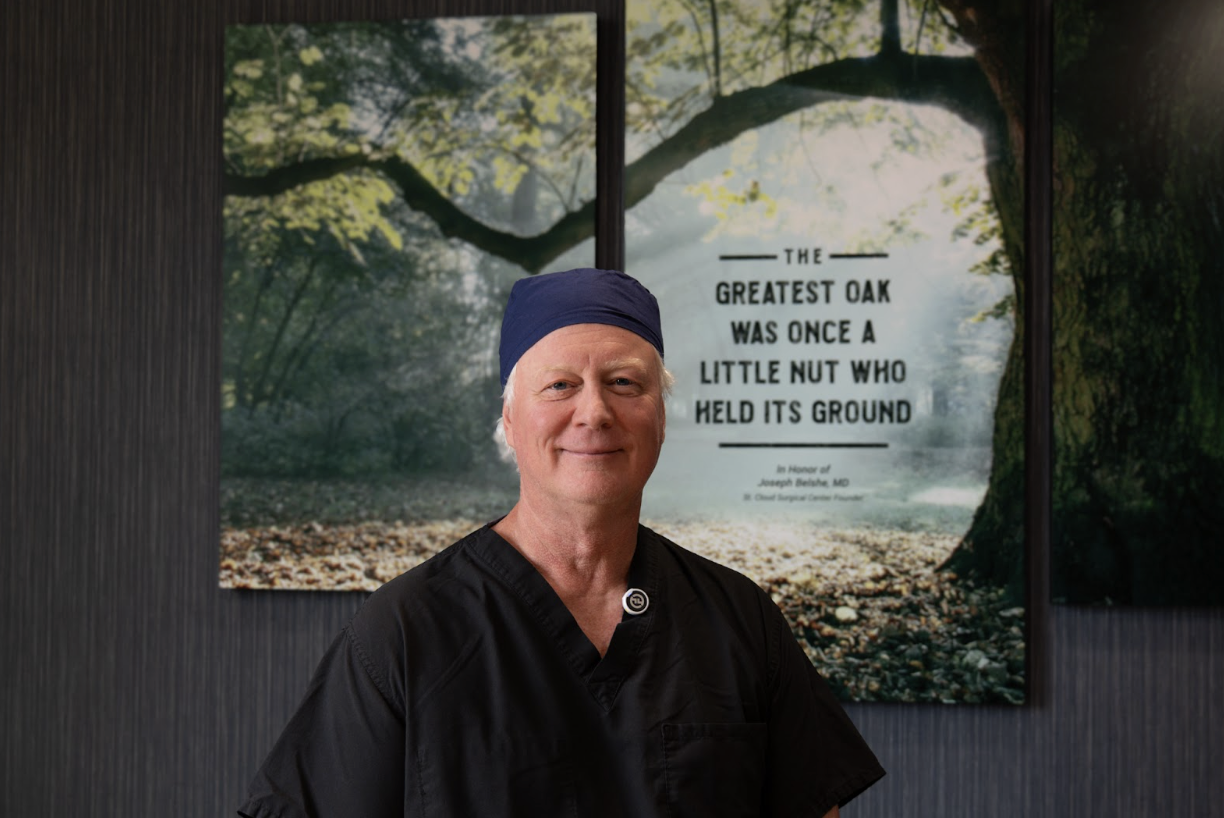Is it Carpal Tunnel or Just Too Much Scrolling?

In the current digital world, our habits and daily work routines profoundly impact our health. Hand discomfort has become increasingly common, but how do you distinguish if it’s just temporary strain or a more serious injury, like carpal tunnel syndrome?
At St. Cloud Surgical Center, board-certified orthopedic specialist Dr. Andrew Staiger provides excellent care for his patients. He is an expert in hand and upper extremity surgery and prioritizes exploring non-operative strategies with patients before resorting to surgical procedures. Dr. Staiger is committed to helping patients understand their diagnosis and get back to doing the things they love, without pain.

First things first, what exactly is Carpal Tunnel Syndrome?
Carpal Tunnel Syndrome (CTS) occurs when the median nerve becomes compressed within the carpal tunnel, a narrow passageway in the wrist made of tendons, ligaments, and bones. While the exact cause is often idiopathic (meaning it arises spontaneously, without a known cause), it typically happens due to thickening along the tendons that share this finite space. As these tendons thicken, the nerve gets trapped or pinched, leading to characteristic symptoms like numbness, tingling, and pain.
While many people associate CTS with activities like keyboarding or repetitive hand movements, studies have shown that overuse doesn’t necessarily cause the condition directly. Instead, it often occurs in the general population, with some individuals being more predisposed to developing it than others. Swelling, inflammation, underlying medical conditions such as arthritis and diabetes, or acute injuries can also contribute to the compression and development of CTS.
Affecting an estimated 1 to 5 percent of adults, CTS is notably more prevalent in females than males, with a 3:1 ratio.
But what happens if you aren’t part of that group and debilitating hand pain’s got you down?
Well, it could be a phenomenon known as scroll fatigue brought on by excessive smartphone use. Research indicates that prolonged smartphone use forces wrists into bent positions, stressing thumb and finger tendons. This sustained strain can, over time, lead to discomfort in the muscles, tendons, and joints of the hand, wrists, and arms.
- Aching or soreness in the wrist, thumb, or fingers
- Tingling or slight numbness following extended phone use
- Cramping or stiffness in the hands
- Mild wrist or hand discomfort that improves with rest
- Tightness in the forearm or base of the thumb
Studies have correlated increased phone usage with pain in the wrist, causing inflammation. However, it doesn’t directly cause carpal tunnel syndrome. While scroll fatigue may not initially cause CTS, it’s a risk factor worth paying attention to before it progresses.
How To Tell The Difference Between Carpal Tunnel Syndrome and Scroll Fatigue
Recognizing the difference between everyday irritation and CTS starts with understanding the warning signs.
Common indicators of carpal tunnel syndrome include:
- Tingling or numbness in your fingers (especially fingertips)
- Pins-and-needles sensation
- Weakness in the hand, making it difficult to grip items or make a fist
- Swelling and stiffness in the wrist and palm
- Symptoms worsening at night or when hands are held in a flexed position for long periods
While anyone can develop carpal tunnel syndrome, research suggests certain professions face a higher likelihood due to the repetitive hand and wrist movements inherent in their daily tasks. CTS is most commonly observed in individuals working in:
- Office and tech jobs
- Construction and trades
- Factory and assembly lines
- Healthcare professionals
- Artists and musicians
Ultimately, if your pain becomes too severe to manage on your own, you should see your local hand specialist to determine the best course of action.
Carpal Tunnel Procedures at St. Cloud Surgical Center
If you are diagnosed with carpal tunnel syndrome by a hand specialist, surgery may be a necessary step, especially if conservative methods prove insufficient. While surgery may feel daunting, if left untreated, CTS can lead to permanent nerve damage to the median nerve.
In severe cases where surgery is necessary, Dr. Staiger and the hand surgeons at St. Cloud Surgical Center will perform a procedure known as carpal tunnel release. This is one of the most common surgical procedures in the United States and has an impressive success rate of 98% or better.
The surgical procedure involves severing a ligament pressing on the median nerve to reduce pressure. The procedure takes 15-30 minutes and is performed under local anesthesia, requiring no overnight stay.
Recovery following carpal tunnel release is generally a smooth process. Most patients can use their fingers almost immediately and can resume light activities within a week or two. Over several weeks, grip strength returns and the complete healing process is finished after a few months. Physical therapy and rest can help speed up the healing process as well. While recurrence is possible, it is not common, affecting only about 5% of patients, usually 10 or 15 years later.

Whether it’s carpal tunnel syndrome or just too much scrolling, it’s important to listen to your body. Early symptoms may seem like no big deal, but if left untreated they can lead to something more serious over time. Fortunately, with simple habit changes and early treatment, most people find relief. When needed, surgery often provides beneficial and lasting results.
If numbness, tingling, or pain is consistently interfering with your daily life, it may be time to see a specialist. Our team at St. Cloud Surgical Center is dedicated to finding the right solution for you. With expert care and a strong desire to see patients improve, your hands are in good hands.

